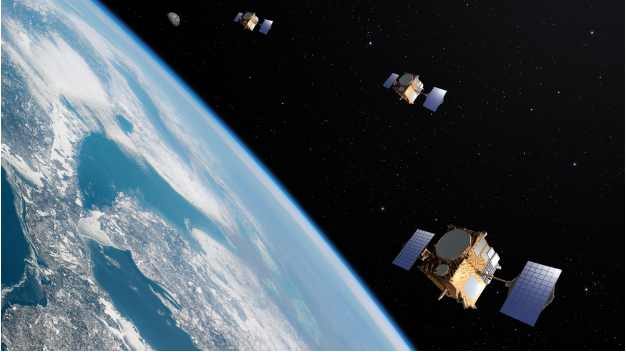Satellites: Space Agents Solving Terrestrial Issues

Artificial satellite is basically any human-made vehicle designed to orbit a space body with a specific purpose, be it to understand the universe better, to detect changes happening on a planet, or anything else. Fundamentally, satellites are used to gather information about the space body they are meant to observe. Most artificial satellites in space orbit the Earth and are essential to the development of technologies and industries on our planet. Many world industries would not be able to operate effectively today without the possibilities modern satellites can provide.
Sixty years ago, artificial satellites were a rarity. Since the Soviet Union launched its first satellite in 1957, their number has grown steadily every year. They have helped unite continents with fast communications, enabled weather monitoring, made a huge contribution to science, improved navigation, and even found military applications.
What Are Satellites?
First, it’s important to define what a satellite is, and what anyone who talks about it means by it. A satellite means an unmanned spacecraft. In other words, it is a spacecraft that is launched by a carrier rocket into Earth’s orbit. Earth’s orbits come in many forms and are qualified mainly by altitude. There are different orbits, low Earth orbit with altitudes from approximately 160 km to 2,000, medium Earth orbits, and the most widely known to the average person — the geostationary orbit. Different satellites are launched to different orbit depending on their technical characteristics and purpose they are about to serve.
Satellites or a satellite constellation come in a variety of applications. There are research satellites, application satellites, navigation satellites (GPS), telecommunications satellites, remote sensing satellites, meteorological satellites, and military (reconnaissance) satellites. There are a lot of them. And they differ not only in what orbit they are in, but also in how fast they travel, how much mass they have, what their design is, etc.
How Do Satellites Differ?
Satellites orbiting Earth come in many shapes and sizes and perform many different functions, but all, in principle, are similar. All satellites have a power source (usually solar panels) and batteries. Arrays of solar panels allow the batteries to be charged. The newest satellites include fuel cells as well. Satellite power is very expensive and extremely limited. Nuclear power cells are commonly used to send space probes to other planets.
The type of a satellite depends on what tasks it solves. With the help of research vehicles it is possible to study the behavior of celestial objects of the universe and a significant volume of outer space. Research devices include: orbiting astronomical observatories, geodetic, geophysical satellites. Applied devices include: meteorological, navigation and technical satellites, communication satellites, and satellites for the study of land resources.
Issues Satellites Solve Across Industries
Satellites come in all shapes and sizes and perform a wide variety of tasks in different domains.
-
- Fires Detection and Monitoring. Satellite imagery combined with GIS maps helps responding to emergency situations timely thanks to effective remote detection of hazardous areas. For instance, in case of a forest wildfire, satellite images help detect thermal anomalies beforehand to prevent fires if possible or react accordingly and track its spreading if it has occurred already.
- Agricultural Monitoring. Satellite farm monitoring enables tracking crop health throughout the whole season effectively to ensure highest possible yields. Satellite imagery analytics can be used for the integration of differentiated fertilizer application, smart irrigation, and much more. More so, historical satellite images allow for retrieving field productivity data for several years, which helps analyze crop performance on a particular field to help plan crop rotation and application of particular fertilizers that tend to accumulate in the soil.
- Weather monitoring. Meteorological satellites help meteorologists predict the weather or see what is happening to it at a given time. More so, they allow for analyzing climate change and detect weather patterns in different areas of the world.
- Military defense. Military satellites can relay encrypted messages, monitor nuclear weapons, enemy movements, warn of missile launches, listen to terrestrial radio, and perform radar imagery and mapping.
Ultimately, satellites have become an integral part of the biggest industries on Earth. They offer unmatched data on different phenomena occurring worldwide. And the more space technology develops, the more they can offer each year.




13 Comments